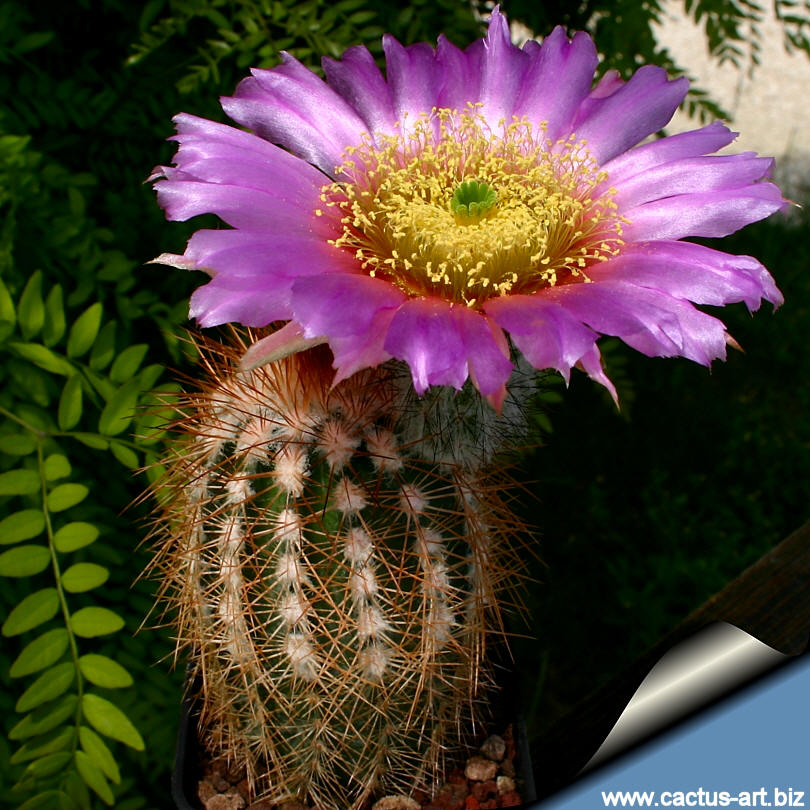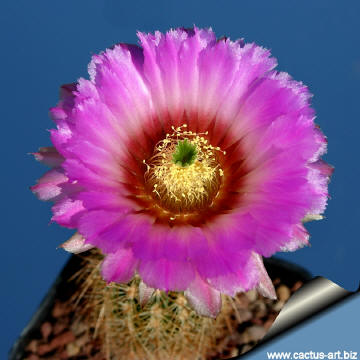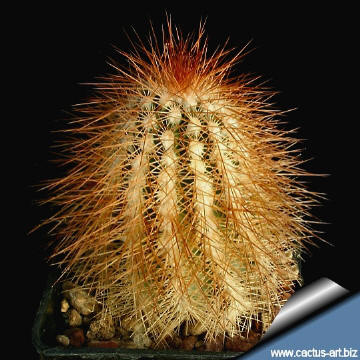|
|
|

Echinocereus
reichenbachii var. baileyi "brunispinus"
(This is a selected form with brownish spines)
|
|
Description: Solitary or branching from
the base
Stems: Cylindrical 10-20(40) cm tall 4-10 cm in diameter;
Ribs: About 15 acute, slender or sometimes arranged spirally,
bearing oval areoles.
Spines: No central spine; Radials: ± 16
needle-shaped, bristly spreading which point outward and downward,
brownish 1-3 cm long.
Flowers: Funnelform magenta-pink close to the end of the stems of
the youngest areoles, which are white and woolly. 6-12 cm in diameter.
Stamen yellow; stigma green; style white. They have a spiny, woolly,
funnel-shaped tube.
|
 |
 |
|
Cultivation: This
cacti, native to the Great Plains, whether found growing directly in the
grasslands or in rock outcroppings, are among the most frost and
moisture tolerant. In culture E. baileyi is without
problems and regularly shows its large purple flowers,
if we provide an adequate winter rest period. It grows
well in an unheated greenhouse, but this species can survive in a
protected bed as well. It is hardy to -30° C or less for short periods of time.
It needs good drainage, Keep drier and cool in winter. Need full
sun.
Propagation: By seeds
or cuttings, as it branches freely from the base.
|
|
Photo of conspecific
taxa, varieties, forms and
cultivars taxa
of
plants belonging to the
Echinocereus reichenbachii
complex
(This
Taxon
has lots of synonyms whit several controversial varieties and subspecies):
Remarks: The taxonomic and geographic boundaries among the segregate
species or infraspecific taxa of Echinocereus reichenbachii remain
nebulous and controversial. In no place do pure populations exist
sympatrically, and all taxa appear completely interfertile.
|
|


Advertising
|
|
|
|
|